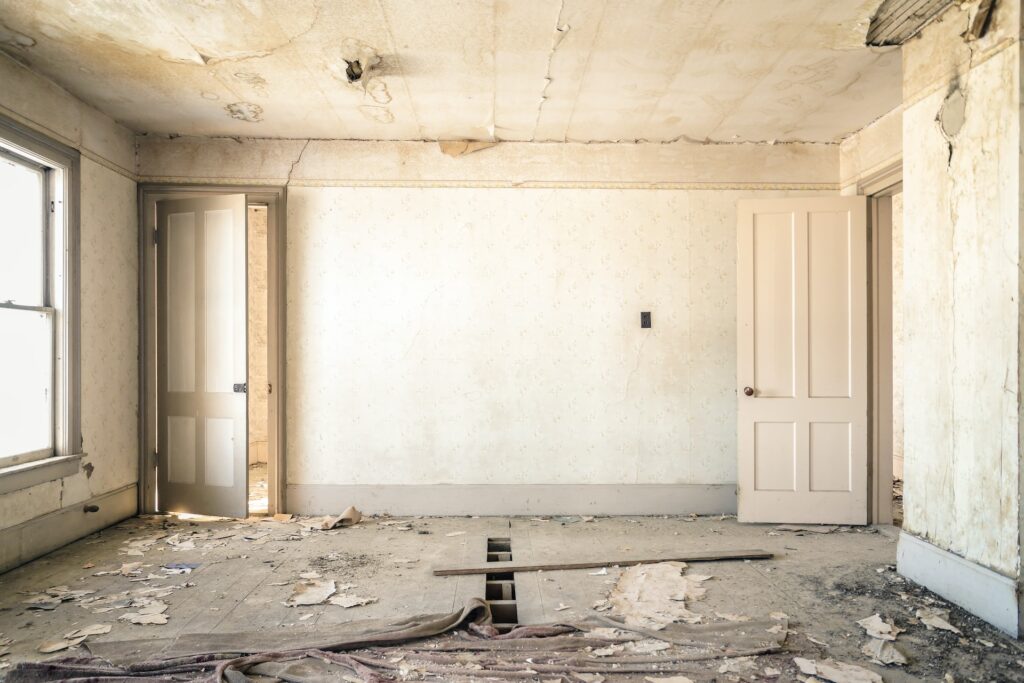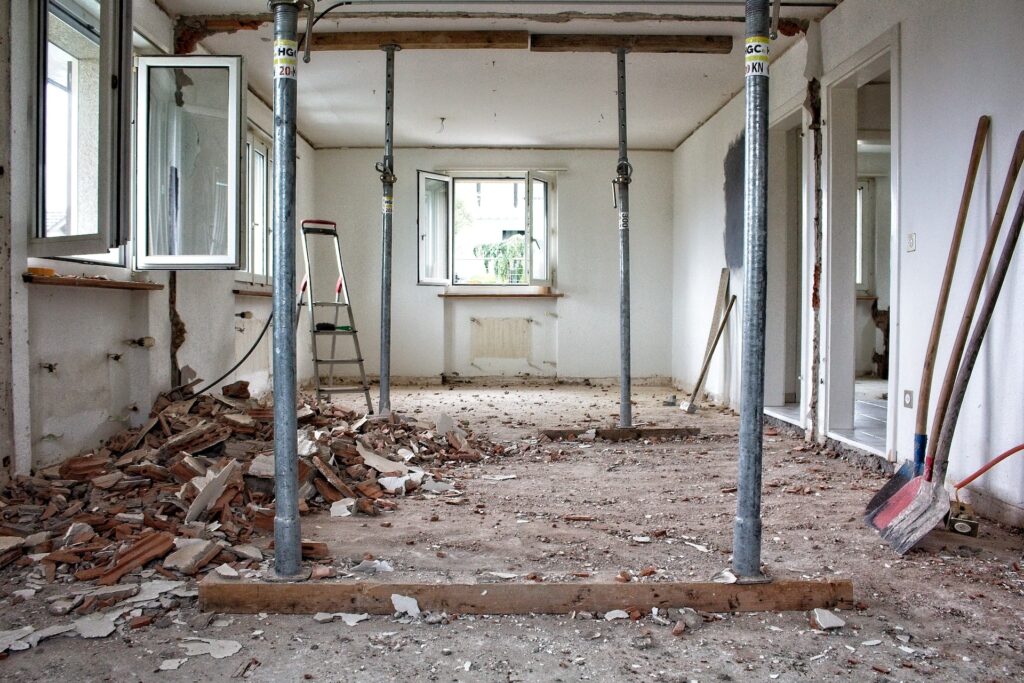
Navigating California’s Granny Flat Laws for Affordable Living
The housing landscape in California has witnessed a significant transformation with the introduction of laws aimed at simplifying the construction of Accessory Dwelling Units (ADUs), commonly called granny flats. In the pursuit of addressing the housing crisis, California lawmakers have navigated through evolving regulations to make building granny flats more accessible to homeowners. One pivotal moment in this evolution was the enactment of government code 65852.2 in 2017, which nullified prior granny flat laws and paved the way for a more uniform and homeowner-friendly approach.
This blog explores the journey of granny flat laws in California, shedding light on the challenges posed by local regulations, the state’s role in standardizing rules, and the impact of these changes on homeowners. From the authority granted to local jurisdictions to the specific standards governing the construction of granny flats, we delve into the key aspects that homeowners need to understand. As we navigate through the size requirements, parking considerations, setback rules, fees, and renting regulations, we aim to provide a comprehensive guide for those contemplating the construction of an ADU in California. Join us on this informative journey, uncovering the intricacies of granny flat regulations and the opportunities they present for homeowners nationwide.

Evolution of Granny Flat Laws in California
A significant evolution in legislative frameworks has marked the journey toward more accessible granny flat construction in California. Before 2017, granny flat laws were diverse, with each of California’s 543 jurisdictions having its own set of ordinances. Unfortunately, many of these regulations imposed substantial restrictions and fees on homeowners, hindering the development of accessory dwelling units (ADUs).
Recognizing the need for a more streamlined approach to address the state’s housing crisis, California lawmakers enacted government code 65852.2 in 2017. This legislative move was pivotal in reshaping the landscape by rendering all prior granny flat laws null and void. The state aimed to override local jurisdictions to relax restrictive and outdated regulations, fostering an environment conducive to increased housing construction.
While the state law regulates granny flat projects uniformly, it acknowledges the authority of local jurisdictions to draft their ordinances within the framework of the new state law. This dual approach allows for variations in regulations, creating a scenario where one jurisdiction may have different rules than another just a few miles away.
This section explores the transition from a patchwork of local ordinances to a more cohesive state law, highlighting the intentions behind this legislative shift and its implications for homeowners seeking to build granny flats in California. Understanding this evolution is crucial for navigating the complex landscape of granny flat regulations and making informed decisions about construction projects.
Local Jurisdictions’ Role
While California’s state law, government code 65852.2, has ushered in a new era of uniformity in granny flat regulations, the role of local jurisdictions remains pivotal in shaping the specifics of ADU projects. Despite the state’s efforts to streamline the process, individual cities and counties still retain the authority to craft their ordinances within the broader framework of the state law.
Local jurisdictions can exercise this authority to address specific needs and concerns unique to their communities. This means that homeowners may encounter variations in regulations and requirements based on where they reside. Some critical aspects that local jurisdictions may have the power to define include:
- Legality of Short-Term Vacation Rentals: Local ordinances may dictate whether short-term vacation rentals of granny flats are allowed or restricted.
- Owner Occupancy Requirements: Some jurisdictions might impose requirements related to the owner’s occupancy, influencing whether the homeowner needs to reside on the property.
- Maximum ADU Size: Local ordinances can limit the size of ADUs, specifying both minimum and maximum dimensions.
Understanding the nuances of local regulations is crucial for homeowners planning granny flat construction. It is advisable to check with the specific city or county authorities to ascertain the ordinances in place, ensuring compliance with local rules while navigating the broader state guidelines. This section delves into the significance of local jurisdictions in shaping granny flat regulations and provides insights into how these variations might impact homeowners’ construction plans.

California State Standards for Granny Flats
The enactment of California Senate Bill 65852.2 in 2017 marked a significant shift in the landscape of granny flat regulations, ushering in a more uniform and streamlined approach across the state. This section outlines the critical state standards that govern the construction and development of granny flats in California.
Single Family Residence Eligibility
The state law now allows any single-family residence to build a granny flat or accessory dwelling unit (ADU) on its property. This inclusive eligibility extends to existing structures, such as garages, which can be converted into ADUs.
Granny Flat Size Requirements
California’s granny flat regulations specify size requirements for these additional dwelling units. The minimum size permissible for a granny flat is 150 square feet. On the upper end, the maximum size is 50% of the size of the existing house, up to a cap of 1,200 square feet for attached units. For detached units, the maximum size allowed is also 1,200 square feet. Importantly, square footage is measured from the inside of the unit.
Note: Some local jurisdictions may impose additional restrictions, so homeowners should know specific ordinances.
Parking Requirements for Accessory Dwelling Units
The state standards address parking requirements, with variations depending on certain factors:
- No Additional Parking Required: If converting an existing permitted space, like a garage, or if the property is within half a mile of a transit stop, no additional parking is mandated.
- Parking Placement: Homeowners needing additional parking must provide it, and the law allows parking anywhere on the lot. However, the designated parking space must be hardscaped for parking, ruling out parking on lawns. Tandem parking in an existing driveway is now acceptable. The requirement is typically one parking spot per bedroom added.
The standards outline setback requirements based on the nature of the existing structure:
- No Setback Requirements for Permitted Structures: If the structure, such as a garage, is already permitted, no setback requirements apply.
- Setback Rules for Additions: Adding a second story to a garage or making certain structural additions may trigger setback rules. A minimum of 5 feet of setbacks on the side and rear lot lines is mandated in such cases.
Fee Considerations
While the new law addresses overregulation and aims to reduce barriers to ADU construction, there are still considerations regarding fees. Impact fees, historically a significant hurdle for homeowners, are expected to be more proportional to the development’s impact on the property. However, the exact definition of “proportional” may vary, and homeowners should be aware of fee structures in their specific locality.
Note: Fees are subject to change, and homeowners should verify current fee structures with local authorities.
Historical Review Fees
If a home is older than 45, a historical review may be required, assessing changes to the exterior and other historical aspects. This review typically incurs additional costs.
Renting Accessory Dwelling Units
Homeowners can rent their accessory dwelling units, but local jurisdictions may restrict short-term vacation rentals. Homeowners should check local ordinances to understand the regulations governing rental arrangements.
Understanding the state standards is crucial, but homeowners must also be mindful of local variations that could impact their granny flat projects. This section overviews the California state standards governing granny flats, emphasizing critical considerations for prospective builders.
Size Requirements for Granny Flats
California’s regulations for granny flats outline specific size requirements to ensure uniformity and compatibility with existing structures. These standards, enacted under Senate Bill 65852.2, clarify the dimensions of granny flats or accessory dwelling units (ADUs). Here’s a comprehensive look at the size requirements set forth by the state:
The state mandates that the minimum size for a granny flat is 150 square feet. This minimum threshold ensures that the dwelling unit provides an essential, habitable space for occupants.
For attached units, the regulations cap the maximum size at 50% of the existing house size. However, the size can be at most 1,200 square feet. This limitation prevents disproportionate expansions that might alter the character of the property.
Example: If the existing house is 2,000 square feet, the attached granny flat cannot exceed 1,000 square feet. If the home is 1,400 square feet, the attached unit cannot exceed 1,200 square feet.
In the case of detached units, whether standalone structures or converted garages, the maximum allowable size is set at 1,200 square feet. This provides flexibility for homeowners looking to add substantial living space separate from the primary residence.
Note: Square footage is measured from the inside of the unit, ensuring a consistent metric for assessing living space.
While the state standards offer a general framework, homeowners should be aware that local jurisdictions may impose additional restrictions or specifications. Some cities might have ordinances that modify the size requirements outlined by the state. Therefore, homeowners need to research and understand the specific regulations in their locality.
Understanding the size requirements is critical for homeowners planning to build a granny flat. It ensures compliance with state standards and sets realistic expectations for the dimensions of the accessory dwelling unit. As the state seeks to address the housing crisis, these size requirements balance allowing additional living space and preserving the character of existing neighborhoods.

Parking Requirements for Accessory Dwelling Units
Parking regulations are crucial in developing accessory dwelling units (ADUs) or granny flats in California. Under Senate Bill 65852.2, the state has established specific guidelines regarding parking requirements to address transportation and neighborhood impact concerns. Here’s an in-depth exploration of the parking regulations for ADUs:
- No Additional Parking Required for Converted Spaces: If homeowners are converting an existing permitted space into an ADU, such as a garage, and the property is within half a mile of a transit stop, no additional parking is required. This exemption acknowledges that structures suitable for conversion often have an existing parking setup.
- Parking Allowance for Transit-Proximity: In cases where the property is not eligible for the exemption mentioned above, homeowners can take advantage of the law’s flexibility. The regulations allow homeowners to provide parking anywhere on their lot, but it must be hardscaped for parking. This means parking cannot be on the lawn, ensuring a designated and organized parking space.
- Tandem Parking in Existing Driveway: Unlike previous regulations, the updated law permits parking as a tandem in an existing driveway. This is a significant shift from the older requirement of a dedicated, separate parking space. However, homeowners will be required to add one parking spot per bedroom in the ADU.
Example: If the ADU has two bedrooms, homeowners must provide two additional parking spots.
Understanding the parking requirements is essential for homeowners planning to build ADUs, as it directly impacts property planning and design. The flexibility in parking regulations, especially for transit-proximate properties, acknowledges the evolving transportation landscape and promotes sustainable practices.
While the state sets general guidelines, local jurisdictions retain some influence over parking regulations. Homeowners should know that specific cities or counties may have additional requirements or variations. It’s advisable to check with local authorities to ensure compliance with state and local regulations.
Navigating the parking requirements ensures that ADU developments contribute positively to the overall neighborhood and transportation considerations. Striking a balance between providing sufficient parking and encouraging alternative transit options aligns with California’s broader goals of addressing housing needs while promoting sustainable urban planning.
Setback Requirements for Granny Flats
Setback requirements are crucial for building accessory dwelling units (ADUs) or granny flats in California. These regulations define the minimum distance that an ADU must be set back from the property lines, ensuring adequate space and maintaining the overall aesthetics of the neighborhood. Let’s delve into the setback requirements and their implications:
- No Setback Requirements for Permitted Structures: If the structure intended for conversion into an ADU is already permitted, such as a garage, homeowners can benefit from a significant advantage. No setback requirements apply to structures that have obtained prior permits. This exemption acknowledges the existing footprint of permitted structures and streamlines the ADU development process.
- Setback Rules Apply to New Structures or Expansions: When homeowners plan to add a new structure or expand an existing one, setback rules come into play. For example, if a second story is added to a garage, the setback requirements apply, necessitating a minimum distance from both side and rear lot lines.
Understanding setback requirements is vital during the planning and design phase of ADU development. It influences the layout and placement of the unit on the property. Compliance with setback regulations ensures that the ADU integrates harmoniously with the existing structures and adheres to zoning guidelines.
While the state establishes general setback guidelines, local jurisdictions may introduce variations or additional requirements. Homeowners should know these local nuances and consult with relevant authorities to ensure state and local regulations compliance.
The setback requirements balance maintaining the aesthetic appeal of neighborhoods and providing homeowners with the flexibility to utilize existing structures. By exempting permitted structures from setbacks, the state encourages the adaptive reuse of spaces, contributing to the efficient use of available land.
In summary, setback regulations play a pivotal role in shaping the physical aspects of ADU development. Homeowners navigating the intricacies of setback requirements contribute to the overall goal of creating well-designed and integrated granny flats that enhance the quality and functionality of California’s housing landscape.

Fees for Building an Accessory Dwelling Unit
Navigating the financial landscape of building an Accessory Dwelling Unit (ADU) involves understanding the various fees associated with the construction process. With the evolution of laws and regulations in California, the fee structure has changed to align to make ADU development more accessible. Let’s explore the critical aspects of fees for building an ADU:
- The Impact of Legislative Changes: Historically, the cost of building an ADU was often prohibitive due to impact fees equating to constructing an entirely new house—however, legislative changes, such as implementing government code 65852.2, aimed to address this issue. The state emphasized that fees should be proportional to the impact of the development on the property.
- Proportional Impact Fees: The concept of proportionality seeks to ensure that fees are reasonable and commensurate with the scale of the ADU project. While the legislation provided a framework for proportional fees, interpretations, and implementations varied across different municipalities. Some cities adjusted their fee structures to align with the principle of proportionality, while others maintained existing practices.
- Range of Impact Fees: Currently, impact fees for ADUs in California can vary widely, ranging from $1,800 to $85,000. These fees encompass various aspects, including utilities, infrastructure, and community services. Homeowners undertaking ADU projects should anticipate these fees as part of their budgetary considerations.
- Specifics of Impact Fee Redefinition: The application must be more consistent despite the legislative push for redefined and proportional impact fees. Some cities have proactively redefined their fee structures to reflect the spirit of the law, while others may have yet to make substantial changes.
- Historical Review Fees: A historical review may be required in cases where the existing home is older than 45 years. This involves assessing the historical aspects of the property, such as exterior changes and building records. Historical reviews typically incur additional costs, often amounting to several thousand dollars.
- Future Considerations: The evolving landscape of ADU legislation suggests that ongoing refinements may impact the fee structure. Homeowners planning to build an ADU should stay informed about local ordinances and fee updates, as these can significantly influence the project’s overall cost.
In conclusion, while legislative changes aimed to make ADU development more financially feasible, the actualization of proportional impact fees varies. Homeowners are advised to research local fee structures, seek clarity on proportional adjustments, and consider these financial aspects when constructing an ADU in California.
Historical Review Fees
In the realm of Accessory Dwelling Unit (ADU) development, homeowners with properties aged 45 years or older may encounter additional scrutiny in the form of historical review fees. This process, mandated by local jurisdictions, involves a comprehensive examination of the historical aspects of the property before approving ADU plans. Let’s delve into the specifics of historical review fees:
- Assessing Historical Characteristics: When a property qualifies for a historical review, it evaluates various elements contributing to its historical character. This assessment includes scrutinizing exterior changes made over the years and examining the building records associated with the property.
- Comprehensive Property Examination: A historical review aims to understand the historical context of the property and ensure that any modifications or additions align with preservation standards. Elements such as architectural features, original construction methods, and overall historical integrity are considered during this process.
- Cost Implications: Homeowners should be prepared for additional expenses during a historical review. The fees associated with this examination can vary, and homeowners may incur several thousand dollars in costs. The exact amount depends on factors such as the thoroughness of the review, the involvement of historical experts, and the specific requirements set by the local jurisdiction.
- Navigating Historical Review Requirements: Complying with historical review requirements can be complex, and homeowners may need to provide detailed documentation and records. This may include photographs, historical documents, and evidence of the property’s evolution.
- Addressing Changes Over Time: One key aspect of the historical review is understanding how the property has changed. This may involve assessing alterations to windows, doors, roofing, and other external features. The goal is to balance preserving historical elements with the homeowner’s desire for ADU development.
- Incorporating Energy Efficiency: In some cases, historical reviews also consider energy efficiency upgrades. While preserving historical features is paramount, there may be a need to enhance energy performance without compromising the property’s historical essence.
- Planning and Budgeting: For homeowners contemplating ADU construction on older properties, factoring in historical review fees is crucial in the planning and budgeting phases. Understanding the local jurisdiction’s requirements and seeking guidance on navigating historical reviews can streamline the process.
In conclusion, historical review fees add a layer of complexity to the ADU development process for older properties. Homeowners should anticipate these costs, engage with local historical review authorities, and ensure their ADU plans align with preservation standards while meeting modern regulatory requirements.
Renting Accessory Dwelling Units
Unlocking the full potential of an Accessory Dwelling Unit (ADU) involves considering its rental possibilities. Whether you’re exploring the option of generating additional income or providing housing for family members, understanding the regulations and opportunities associated with renting ADUs is crucial.
One of the primary advantages of having an ADU is its flexibility in terms of rental arrangements. Homeowners can rent the ADU to long-term tenants, providing a stable income stream. Alternatively, depending on local regulations, short-term rentals, such as those on platforms like Airbnb, may be an option.
Local jurisdictions often impose regulations on renting ADUs, and homeowners must familiarize themselves with these rules. Restrictions may include the duration of rental periods, the total number of occupants, and whether short-term vacation rentals are permitted. Compliance with these regulations is essential to avoid legal issues.
While the allure of earning extra income through short-term vacation rentals is enticing, not all jurisdictions permit this practice. Homeowners must thoroughly research and understand short-term rental rules in their locality. Some areas may have restrictions or outright bans on such rentals to preserve neighborhood character.
Opting for long-term rentals brings stability and consistent income. Homeowners can engage in traditional leasing agreements with tenants, providing a housing solution for individuals or families. Establishing clear lease terms, rental rates, and expectations is essential to foster positive landlord-tenant relationships.
Certain jurisdictions may impose occupancy requirements for ADUs, dictating the number of individuals allowed to reside in the unit. Homeowners should be aware of these limitations and communicate them to prospective tenants. Adhering to occupancy regulations ensures compliance with local laws and maintains the integrity of residential neighborhoods.
Renting out an ADU can contribute significantly to a homeowner’s income, but it’s crucial to consider the financial aspects. This includes determining appropriate rental rates based on local market conditions, factoring in maintenance costs, and understanding potential tax implications associated with rental income.
Crafting comprehensive lease agreements is paramount for both short-term and long-term rentals. These agreements should outline terms and conditions, rent payment schedules, and expectations for maintenance responsibilities. Clear communication and transparent agreements contribute to positive landlord-tenant relationships.
Navigating the nuances of renting ADUs is more accessible with support from local housing authorities and resources. Homeowners can seek guidance on rental regulations, zoning requirements, and tenant-landlord laws specific to their jurisdiction.
In conclusion, renting accessory dwelling units gives homeowners various opportunities and considerations. Understanding local regulations, choosing suitable rental arrangements, and fostering positive tenant relationships contribute to a successful ADU rental experience. Whether providing tenant housing or accommodating family members, ADUs offer a versatile and valuable addition to residential properties.

Permitting Illegally Built Structures
Addressing the challenges associated with illegally built structures is a complex yet essential aspect of the evolving landscape surrounding Accessory Dwelling Units (ADUs). Homeowners may find themselves in a situation where an existing structure, such as an ADU, was constructed without the proper permits and adherence to building codes.
The first step in addressing an illegally built structure is acknowledging its existence. Homeowners should assess whether the ADU or structure was constructed without the required permits and approvals. Recognizing the non-compliance is crucial for initiating the proper steps toward legalization.
Engaging with local building departments and authorities is fundamental to the process. Homeowners should schedule consultations to discuss the existing structure, its status, and the necessary steps to bring it into compliance with current building codes. Building officials can guide the specific requirements for retroactively permitting the structure.
Permitting an illegally built structure involves bringing it up to compliance with current building codes and safety standards. This may require modifications, renovations, or additions to ensure the structure meets the established regulations. Homeowners should work closely with architects and contractors to develop plans that align with code requirements.
In some cases, local authorities may require structural assessments to evaluate the safety and integrity of the existing illegally built structure. This process ensures that the modifications or upgrades necessary for compliance do not compromise the overall stability and safety of the ADU.
Legalizing an illegally built structure comes with associated costs. Homeowners should budget for expenses related to architectural plans, construction work, permit fees, and any required inspections. Understanding the financial implications is crucial for planning and executing the process effectively.
As part of the permitting process, homeowners may need to address energy efficiency and building standards. This could involve incorporating energy-efficient features into the structure to align with contemporary environmental and sustainability requirements.
The timeline for permitting illegally built structures can vary based on the modifications’ complexity and local authorities’ responsiveness. Homeowners should be prepared for a comprehensive review process, including plan approvals, inspections, and final certifications.
Seeking professional guidance from architects, engineers, and contractors with experience in ADU legalization is highly advisable. These experts can navigate the complexities of the permitting process, ensure compliance with codes, and provide valuable insights to streamline the overall effort.
In conclusion, the path to permitting illegally built structures involves collaboration with local authorities, adherence to building codes, and a commitment to safety and compliance. While the process may pose challenges, legalizing existing ADUs contributes to safer living spaces and aligns with the broader goals of housing regulation and oversight. Homeowners embarking on this journey should approach it with diligence, transparency, and a commitment to meeting the established standards.
Conclusion
The evolution of Granny Flat laws in California reflects a significant shift in housing regulations, aiming to address the state’s housing crisis and provide homeowners with increased flexibility. From nullifying prior restrictive laws to establishing California state standards, the journey to legalize Accessory Dwelling Units (ADUs) has seen notable milestones.
Local jurisdictions play a pivotal role in shaping the landscape of ADU regulations. While California’s state law establishes a framework, local ordinances allow jurisdictions to tailor regulations to their specific needs. Understanding the interplay between state and local regulations is crucial for homeowners navigating the building process and permitting Granny Flats.
California state standards for Granny Flats provide essential guidelines for construction, ensuring that single-family residences can integrate ADUs seamlessly. The size requirements, parking considerations, and setback regulations contribute to a standardized approach while allowing for some flexibility based on local jurisdictions.
Building and permitting ADUs involves various considerations, including adherence to building codes, compliance with energy efficiency standards, and addressing historical review fees. Homeowners contemplating the addition of Granny Flats should approach the journey carefully, seeking professional guidance to navigate the complexities of the permitting process.
In conclusion, the landscape of Granny Flats in California continues to evolve, offering homeowners new opportunities for housing solutions. As the demand for affordable and flexible living spaces grows, the role of ADUs in addressing housing needs becomes increasingly significant. The ongoing efforts to streamline regulations and provide homeowners with clearer pathways to ADU construction signal a positive direction for housing diversity and accessibility in California. Whether adapting existing structures or exploring new construction, the journey to Granny Flat legalization involves collaboration, compliance, and a commitment to creating sustainable and inclusive communities.

Jason Somers, President & Founder of Crest Real Estate
With over 15 years of professional experience in the Los Angeles luxury real estate market, Jason Somers has the background, judgement and track record to provide an unparalleled level of real estate services. His widespread knowledge helps clients identify and acquire income producing properties and value-ad development opportunities.
Learn more about Jason Somers or contact us.



